March 27th 2023, Antigua, Guatemala.
The gods have blessed Antigua. Once the capital of Guatemala, they wrecked it in the late 18th century but in doing so, almost certainly stopped it turning into just another sprawling Latin American city, choking with people and traffic and horrible buildings.
Today, it is probably Guatemala’s major tourist attraction, along with Mayan ruins, many of them concentrated in the northern parts of the country. Antigua is home to about 60,000 people, a noticeable few of them expat Britons and Americans, and it’s visited annually by over a million tourists, many of them backpackers. And while it is in the Tropics, because it’s 1,500 meters above sea level, it is cool . . . in every sense of that word. It is also surrounded by volcanoes, including Acatenango, at 3,976 meters, the third tallest mountain in Central America. I climbed it a few years back with my daughter, Natasha, who at the time was working as a volcano guide, leading parties to the summit, camping for the night to see the dawn, and then leading them down again. When you’re in Antigua, Acatenango has a really big presence to it, as does Agua (pictured here). They tower over the city and yet don’t seem oppressive, to me at any rate.
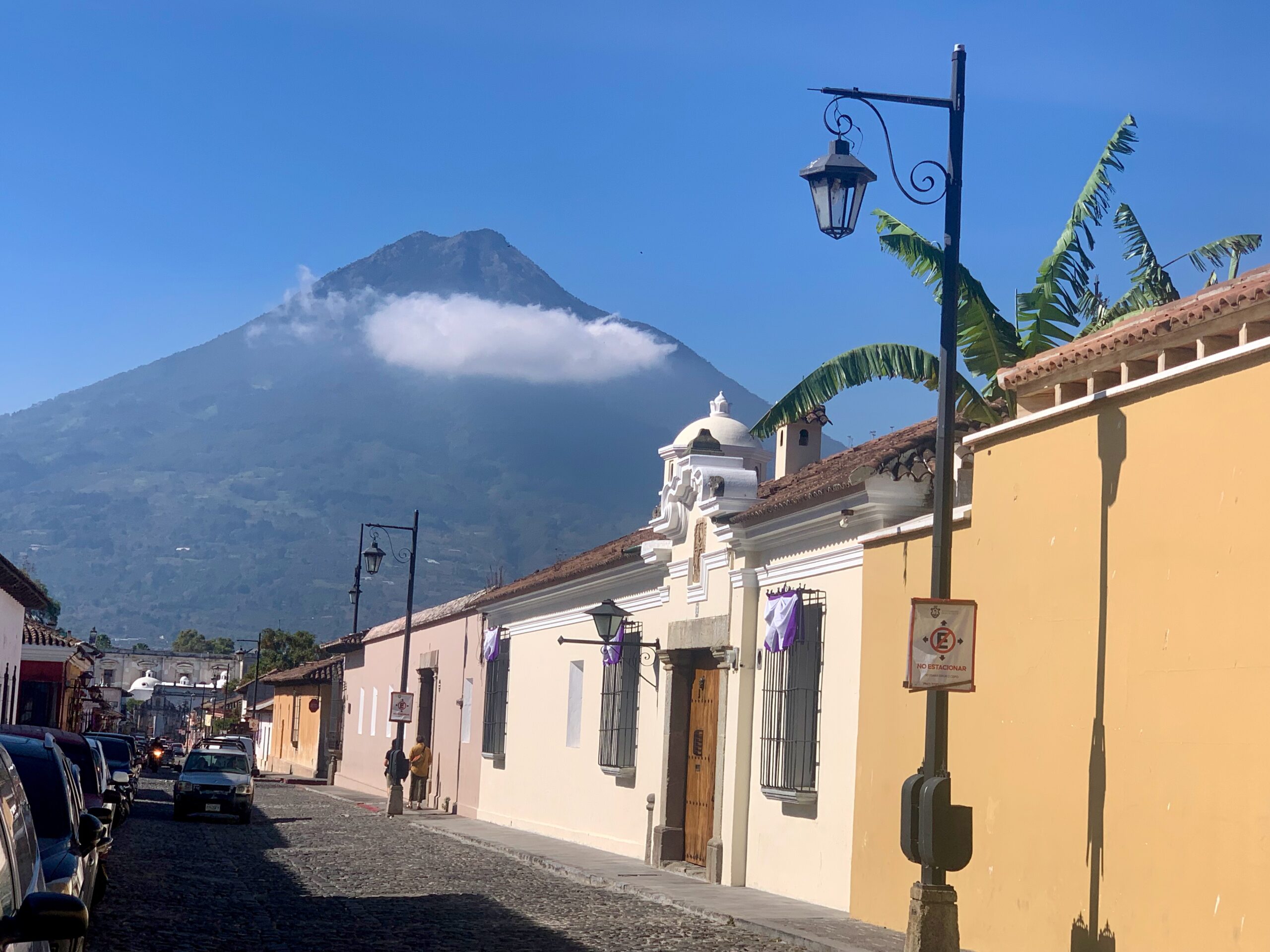
Acatenango has a sister volcano, Fuego (which means fire) that is one of the most active volcanos in Central America and sits just 16 kilometers west of Antigua and, when you at the summit of Acetenango, it feels like it is within touching distance. Fuego erupts daily, belching smoke and ash upwards every 20 minutes or so. In December 2018, a major eruption killed 215 people and there was another big eruption in 2022. From Acatenango, you can watch it puff away, sometimes spewing enough for it to rain ash. It used to be that the eruptions from Fuego came out of its top of its cone, but since the major activity of recent years, the lava and fire exit has moved to the side of the mountain and is not so visible from the city. But it is still puffing away . . .
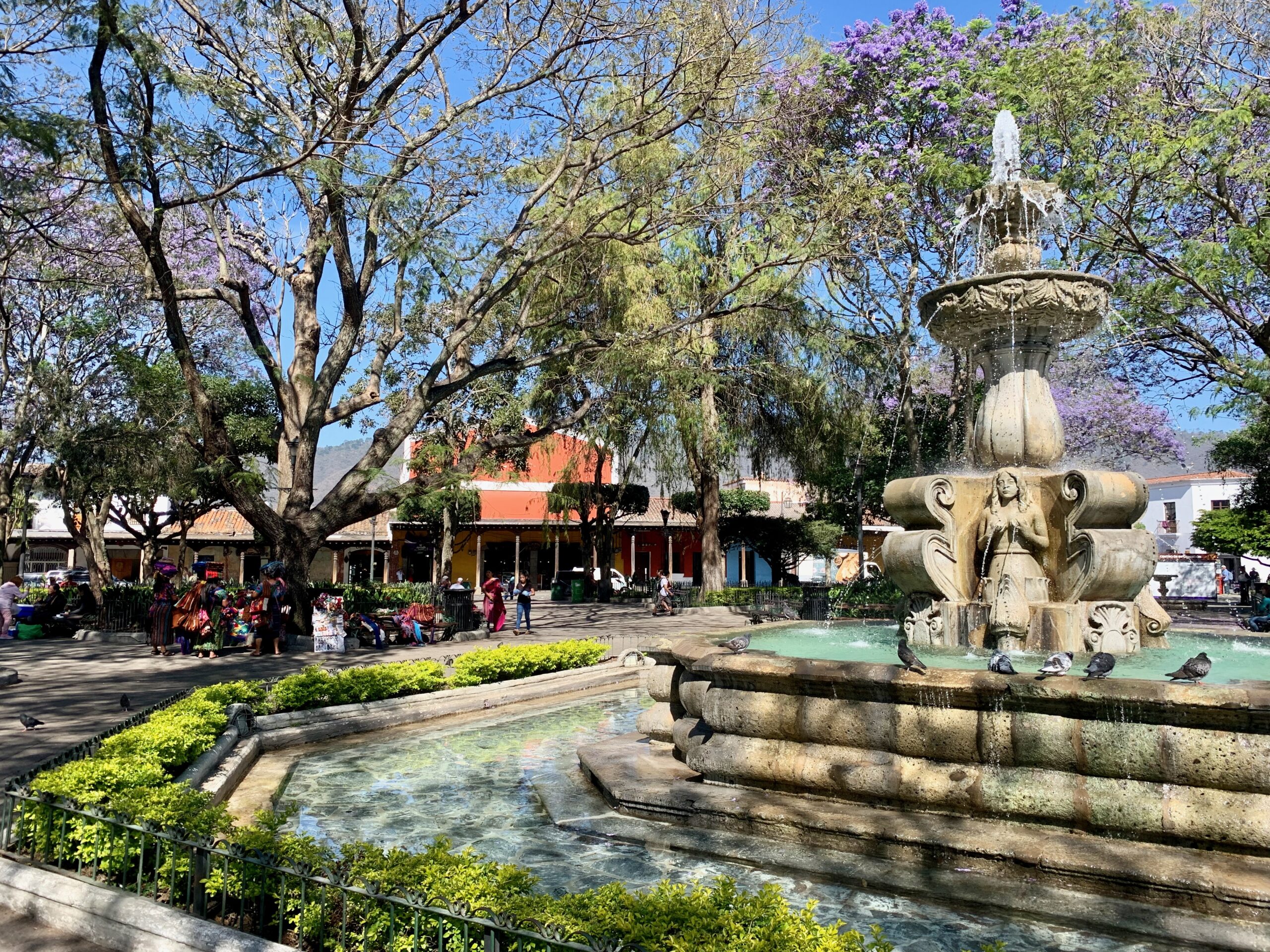
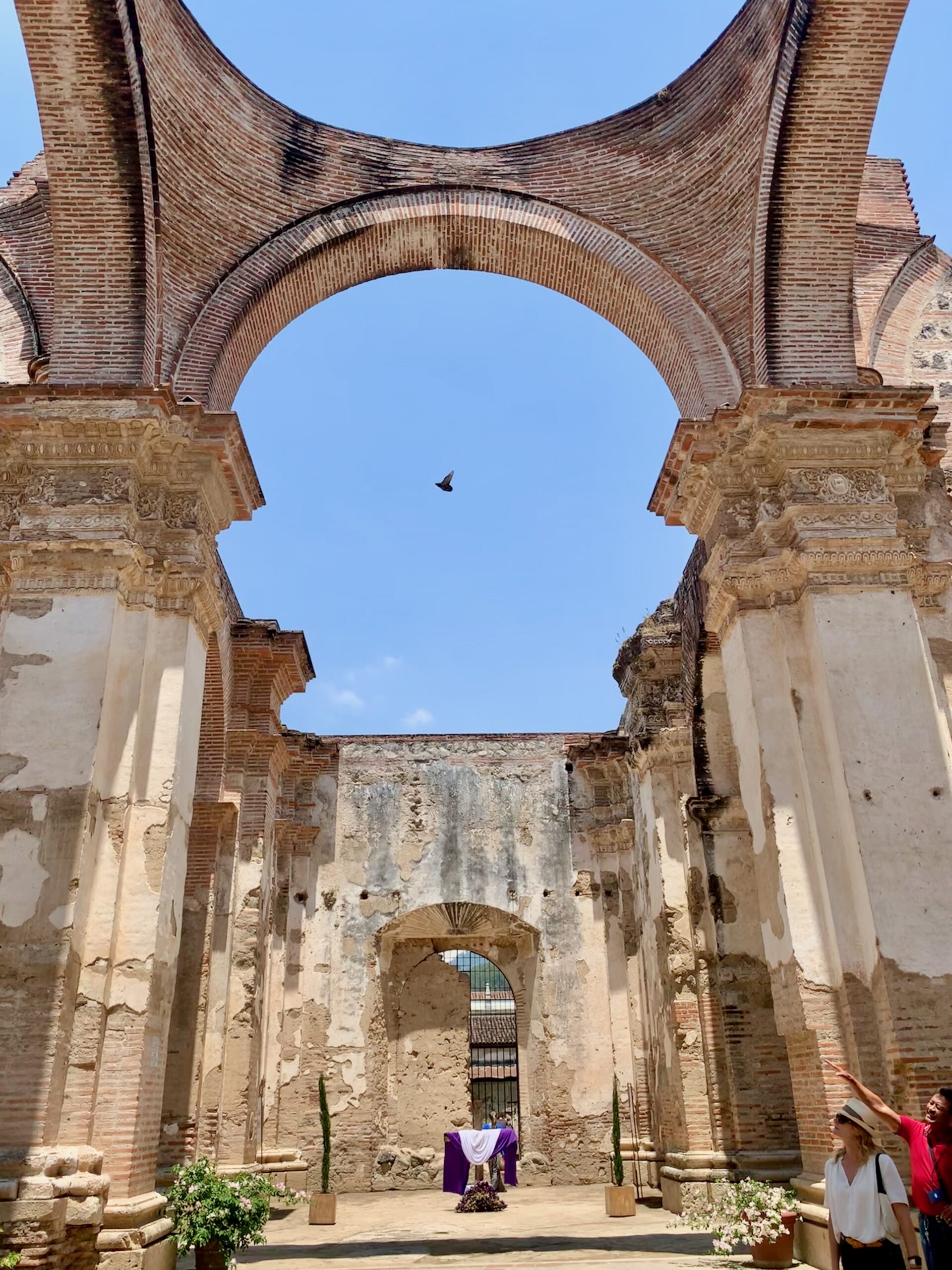
In the shadow of the volcanoes, Antigua gets on with life. Its narrow, cobble stone, grid pattern streets are full of clothes and trinket shops, cafes, restaurants, bars, hostels and cute posadas whose internal courtyards are full of plants and dappled light. Indigenous women are everywhere, their arms laden with brightly coloured woven fabrics they sell to tourists. And everywhere too are the ruins of huge buildings, most of them churches or structures related in some other way to the church, convents and seminaries, for example. One whole side of the pretty Plaza Mayor — central fountain, shrubs, flowering trees and lots of birds — is taken up by the Catedral San José. However what one sees today as a grand statement church, dominating the city’s main square, is but a tiny fraction — about a sixth by my estimate — of the original 16th century complex. This took up an entire quad of the city and included all the buildings associated with ecclesiastical learning, great power and dominance. But today, it is a ruin, frozen in time, restored not to its former glory, made safe only as a living wreck for tourists. The walls of the nave, side aisles and transepts stand but all of the great dome ceilings that capped each of the four-legged clusters of giant columns are now open to the sky. Pigeons swoop in and out of the building where the domes once were. The place has an Ozymandias quality to it — Round the decay/ Of that colossal Wreck, boundless and bare/ The lone and level sands stretch far away. . .
I got myself into a hostel on the edge of the city, a place named Hostel Hopa Antigua. A series of low level, single storey buildings spread over a large area, it used to be a small hotel, the Hotel Camino de Santiago, probably having started life as a family home. As a hostel, it is very popular with young Israelis and when I arrived back after a galumph around the city, the dining tables had been arranged into a single spread with seating for about 20 place settings and a scattering of bottles of wine.
“Join us,” said Idan, a slightly self-effacing young man who manages the place. He’s initially a little shy but opens up when he gets to know you and has a friendly and warm personality.
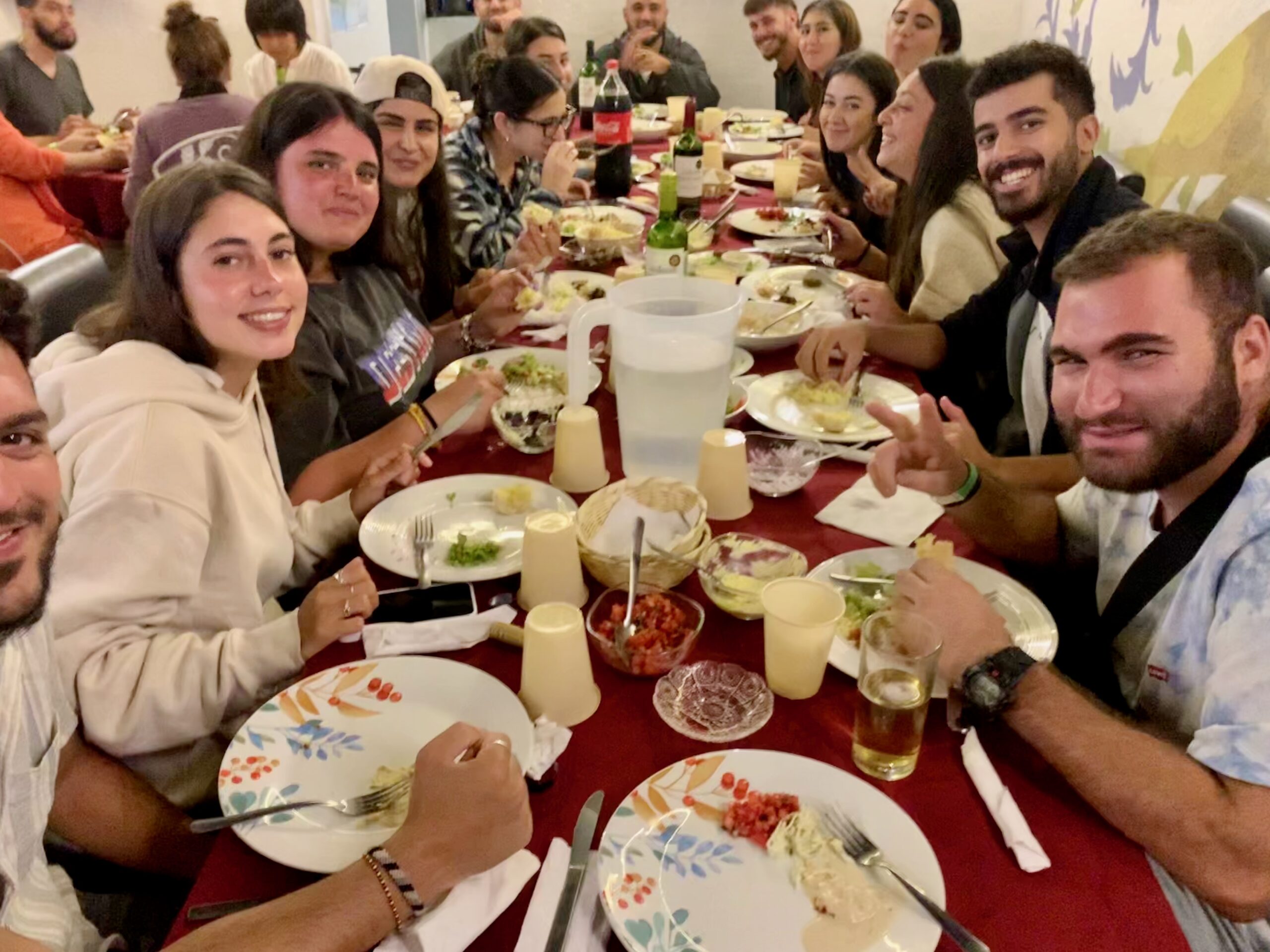
The table was set for shabbat, the Jewish Friday evening dining ritual that, formally, is about remembering God’s creating the world in six days and resting on the seventh — the Jewish equivalent of Sunday for Christians. Soon every place at the table was taken but the hubbub of chatter was brought to a halt by Tamir who stood up to give the kiddush, the Hebrew blessing given over wine. I watched as he filled a heavily embossed glass and kept on filling it to within a hair’s breadth of overflowing. (I read later this is the manner prescribed as per the Hebrew Bible and surely must be the origin of the phrase “my cup runneth over” indicating abundance?) We men used paper napkins to double as kippahs, the little Jewish skullcaps that are worn during players. And then the goblet was passed around person to person, and we all took a sip. The second half of the blessing was a very distinctly Jewish incantation — “Blessed are you, Adonai, our God, Sovereign of all . . .
“As first among our sacred days, it recalls the Exodus from Egypt. You chose us and set us apart from the peoples. In love and favour, You have given us Your holy Shabbat as an inheritance. Blessed are You, Adonai, who sanctifies Shabbat.”
And then we ate — lots of coleslaw-style shredded salad, hummus and bread, followed by schnitzel, pasta and mashed potato. It was a kind and generous gesture to invite me to their table for what was a uniquely Jewish ritual and I told Idan so. “Now you are one of us,” he said, smiling.
By coincidence, it was to be a big weekend for another religion in Antigua. Sunday saw the annual procession associated with Saint Bartholomew, the Procesión Jesús Nazareno de la Caída de San Bartolome Becerra. It starts at 5am from the Church of St Bartholomew and, winding its way around the city, lasts pretty much the entire day until midnight, pulling in some 350,000 visitors. It’s quite a spectacle and, in some ways, is very moving.
A series of sculptures depicting scenes from the life, death and resurrection of Christ are mounted on a very long, very heavy wooden platform, perhaps 40 or 50 meters in length and three meters wide, that is carried through the streets on the shoulders of no fewer than 90 men. The platform is called an anda and the men are cucuruchos. They wear purple robes and hoods and there’s a whiff of Dan Brown about them; in fact, there a whiff of Dan Brown-meets-the-KKK-meets-the-Corleone family about the whole shebang! The platform moves very, very slowly, and, with the slow, careful steps of the cucuruchos, it sways gently from side to side as though floating on water. The two rows of cucuruchos brace themselves against the great weight. They seem to meld into two single lines on either side; their legs move in unison like a centipede — forward a step, sway, then forward another step, sway back again. At front and rear, helpers assist with the sway, keeping the rhythm tight and everything in balance.
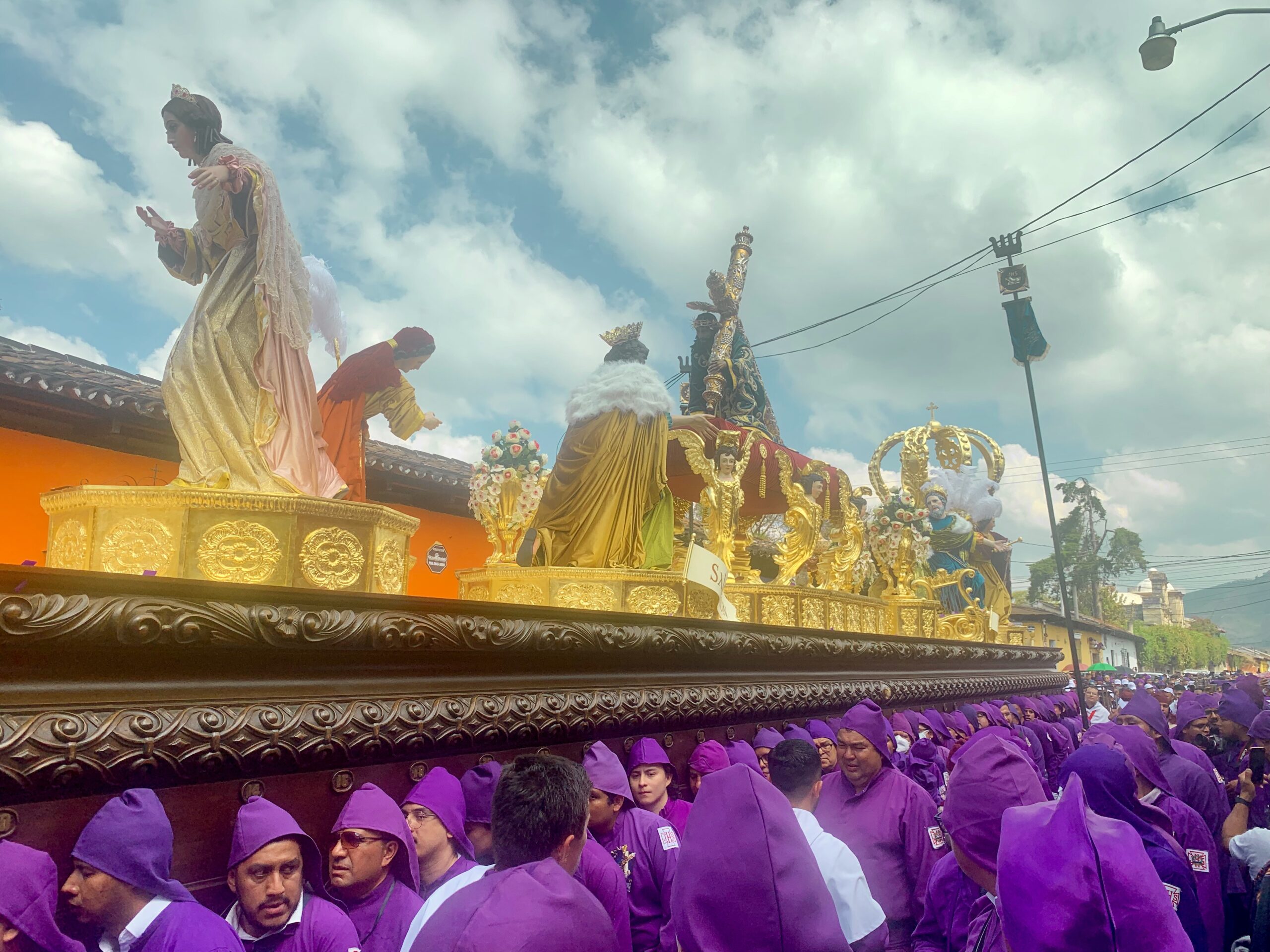
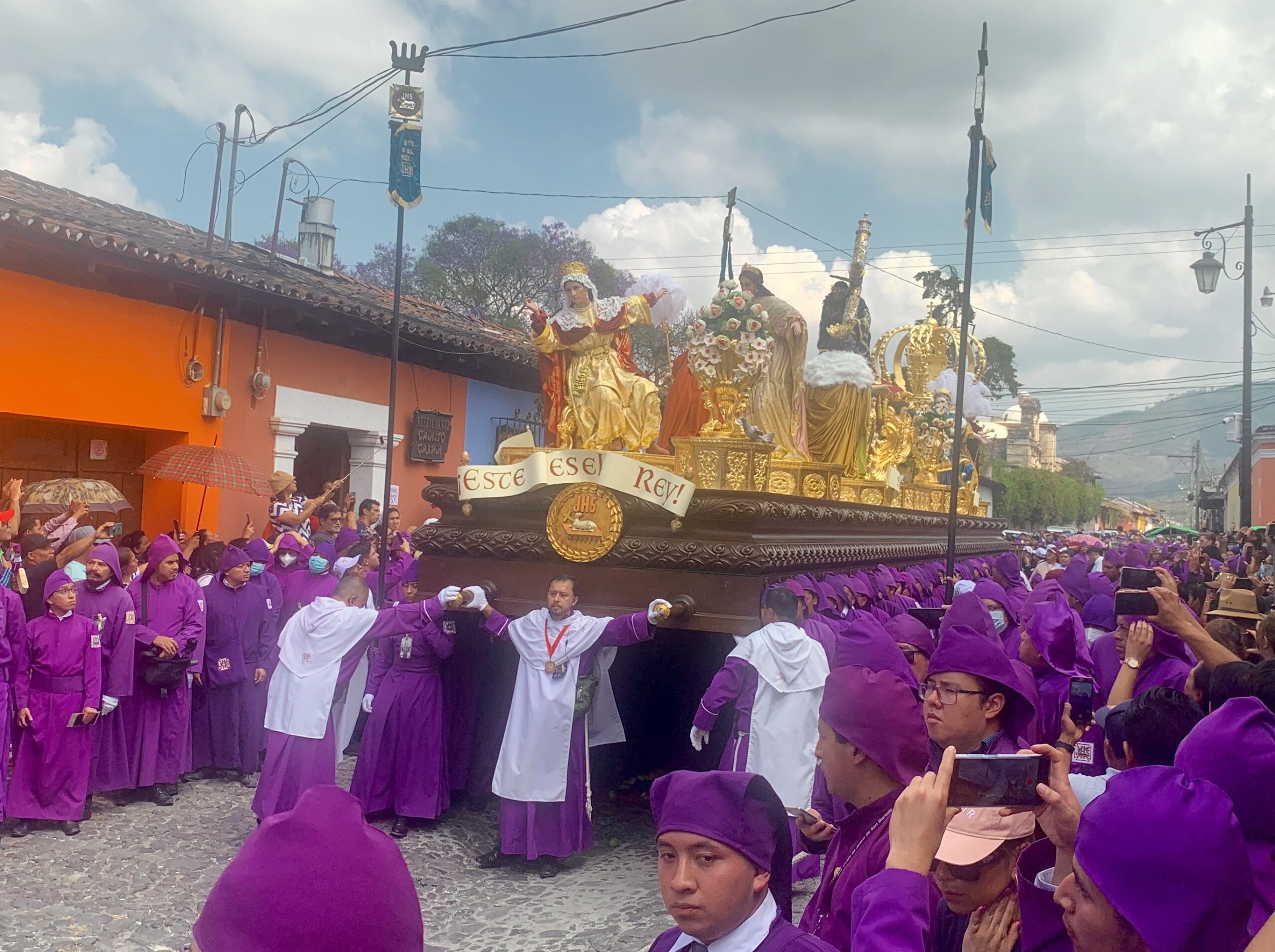
The huge anda is followed by a smaller one that is carried by 26 women. On it are mounted sculptures associated with Mary. All the cucuruchos struggle with the weight they carry but several of the women looked to be in some distress and had to pause to recover their composure.
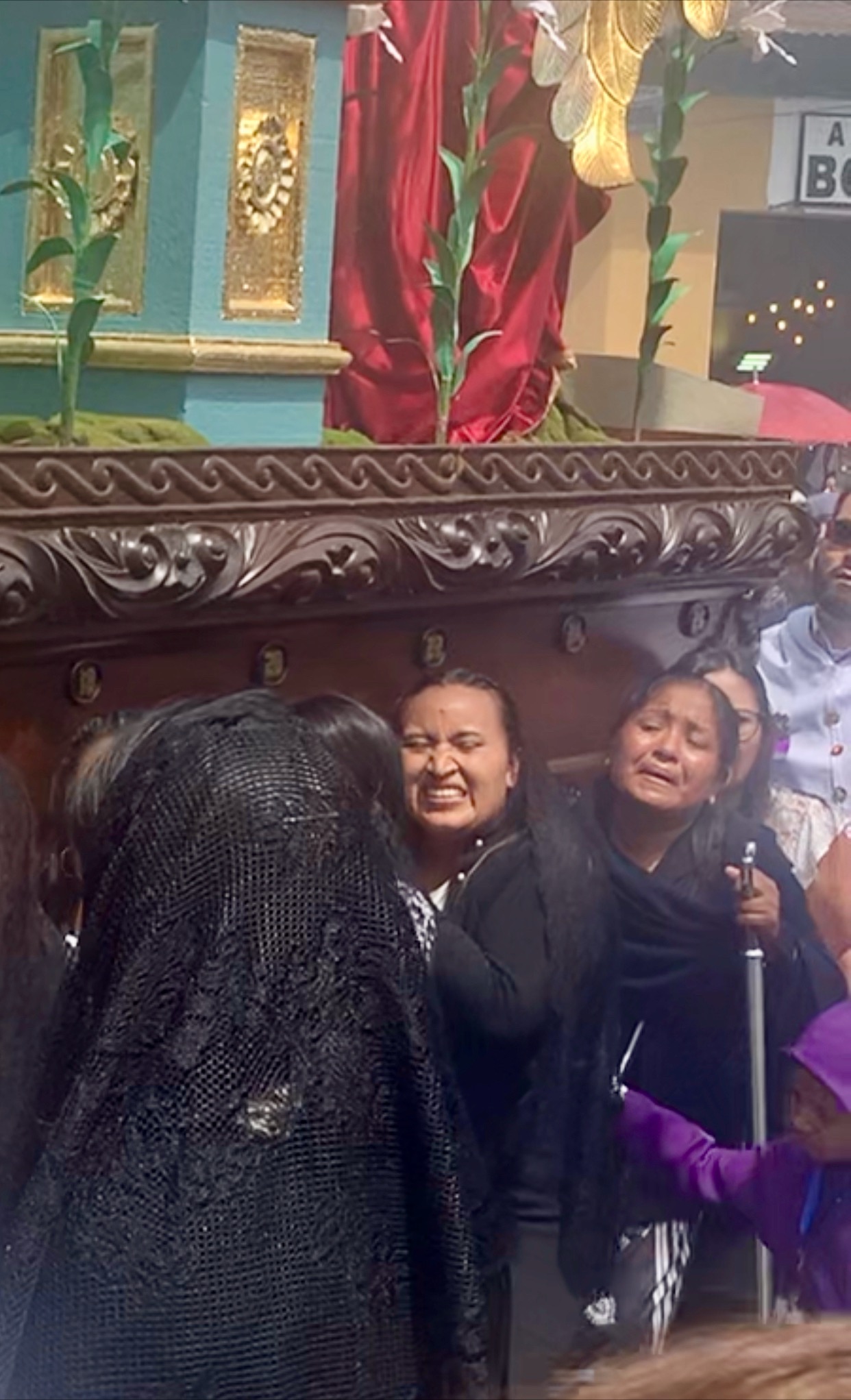
Behind each anda were two marching bands and it was these, with the swaying, that somehow for me made the spectacle emotional. Each band was led by a set of kettle drums and coming up the rear was a phalanx of sousaphones, those great noisy, wrap around brass instruments of marching band fame. In between were bell lyras, flutes and clarinets, trumpets, trombones and tubas, big base drums carried on chests, and symbols. I could not identify the music being played by the first band but the second one played Divino Justo Juez and both pieces of music had a funereal flavour to them, which I suppose is appropriate given that it is just a few days to go to Easter.
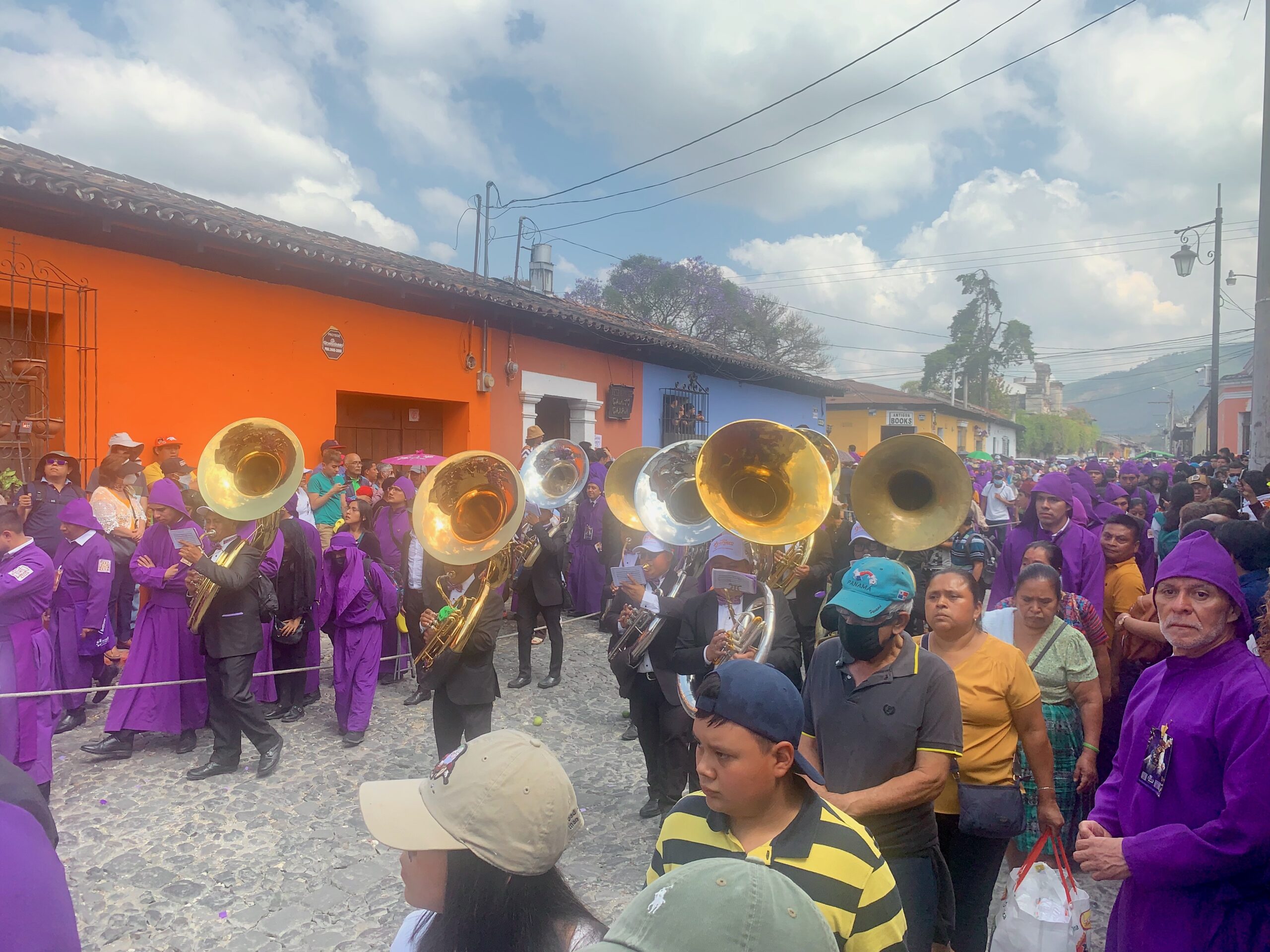
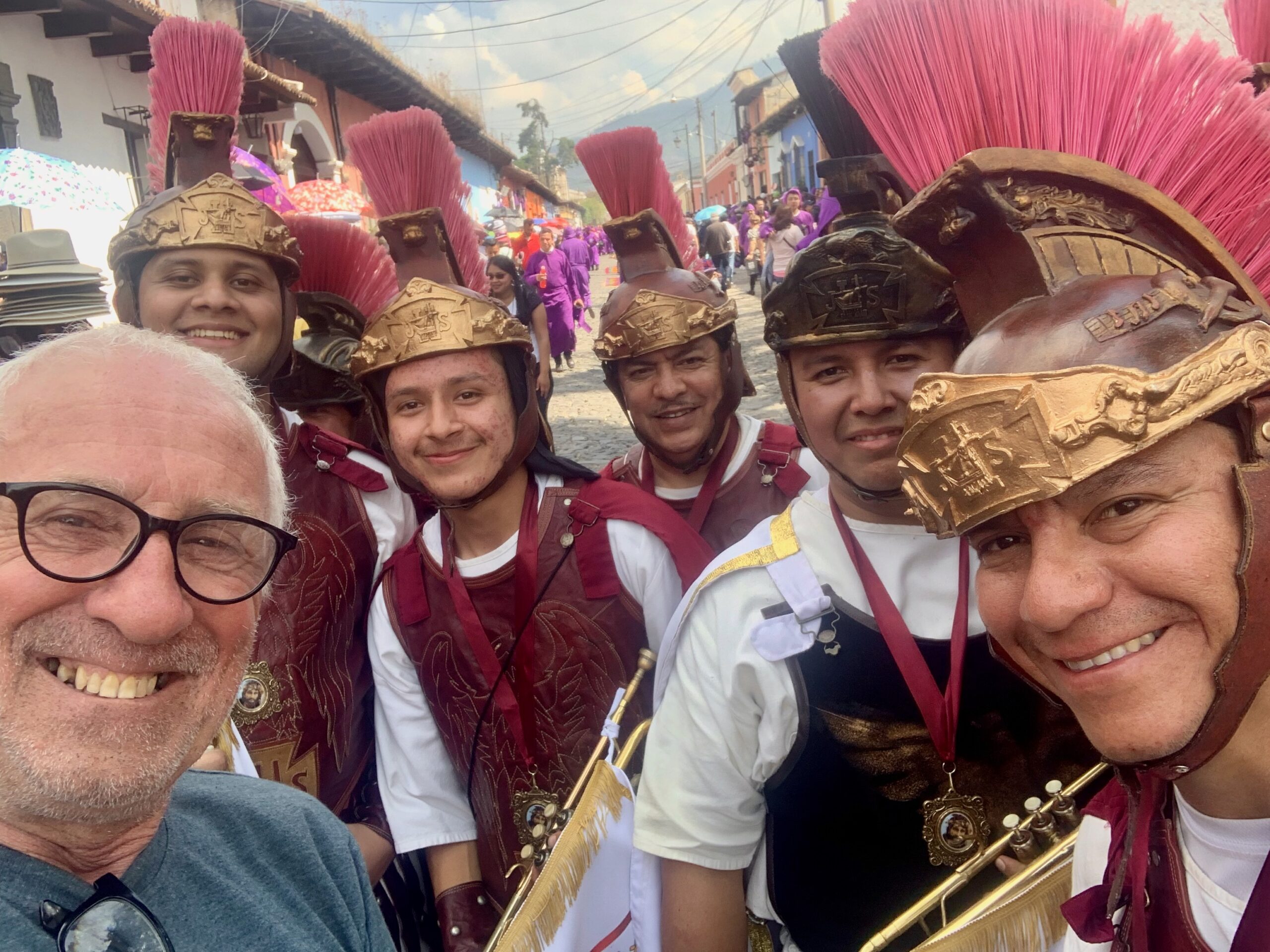
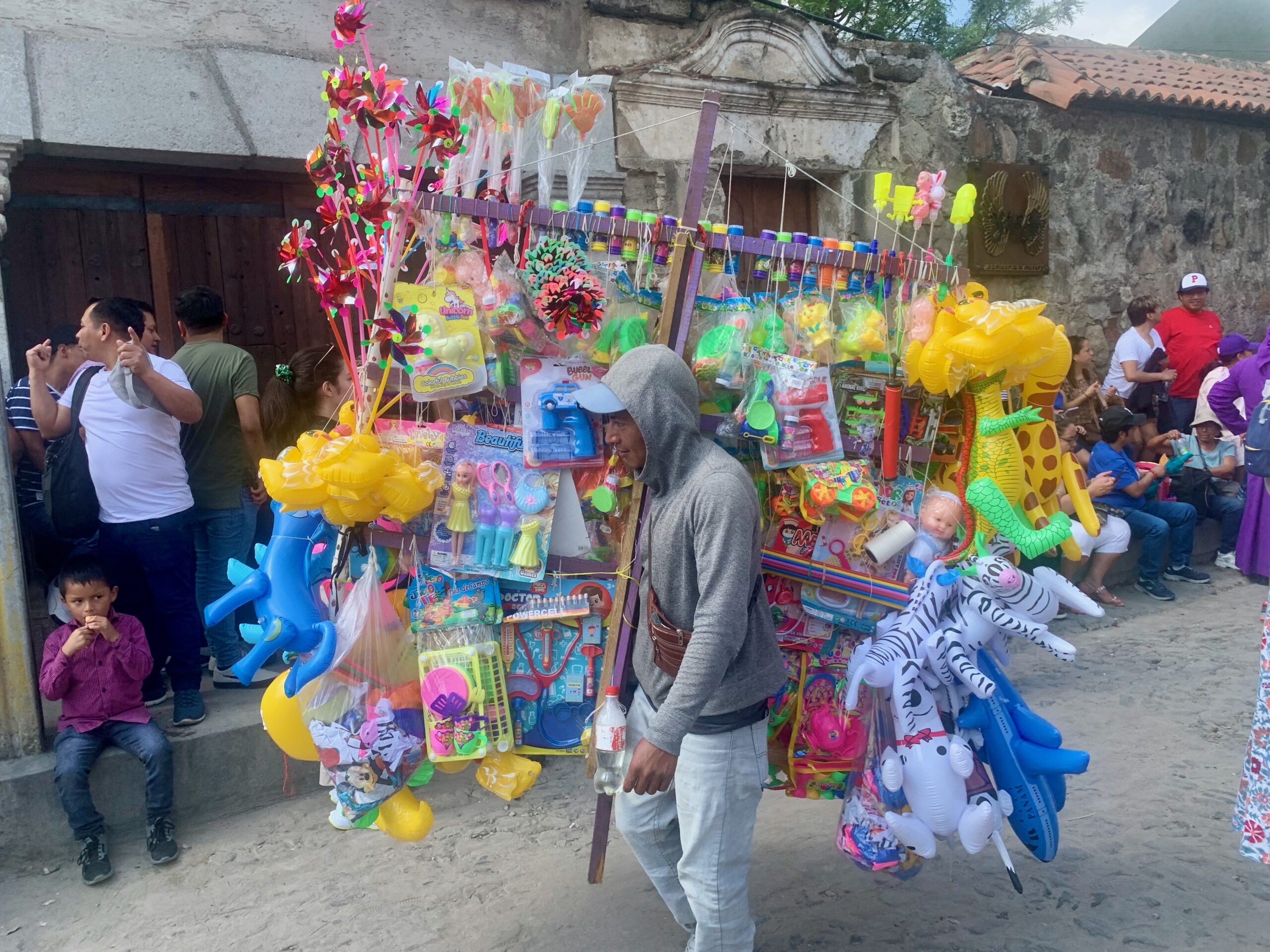
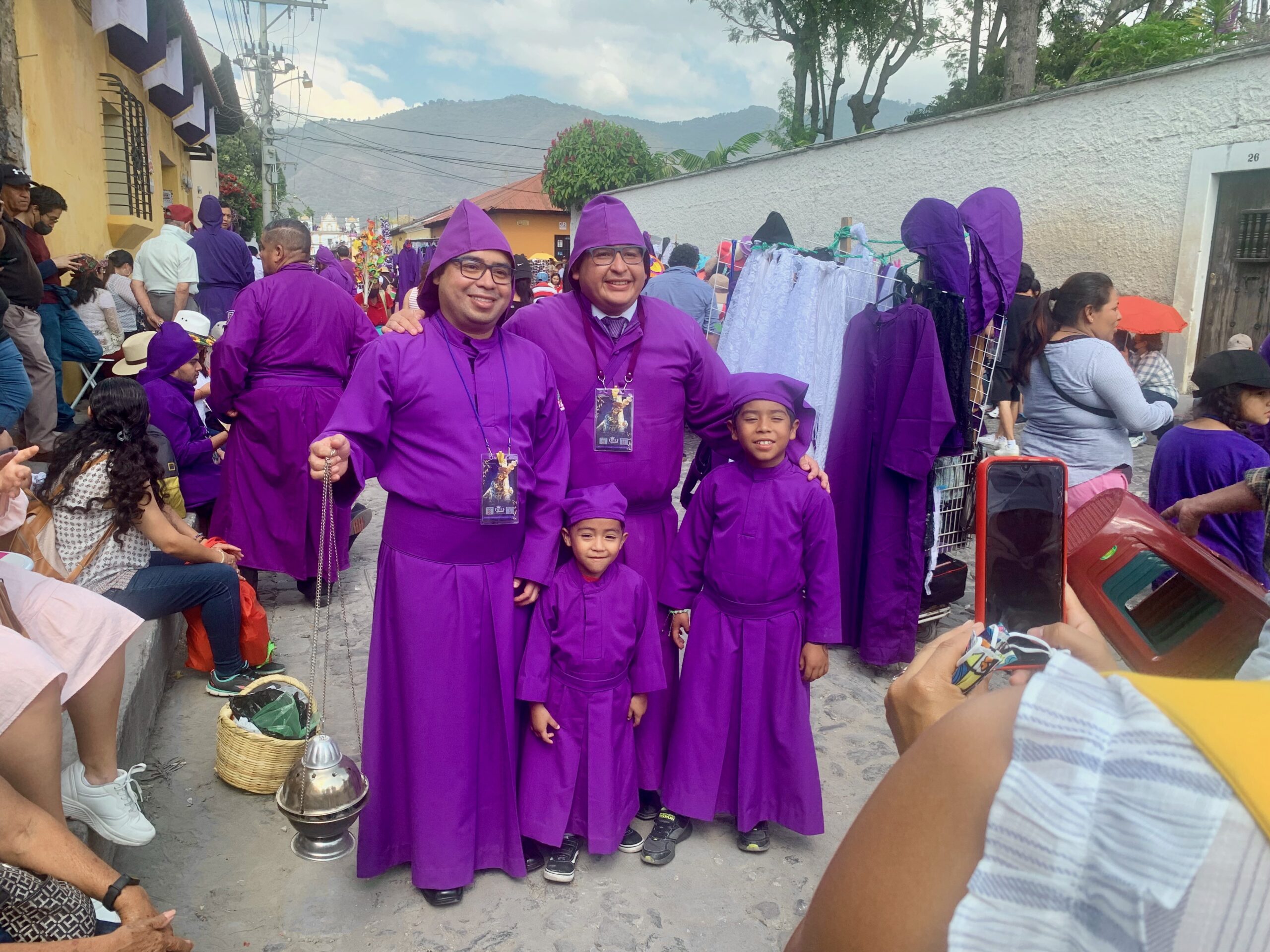
The narrow streets were thronged with hawkers, families and children. It was a real family day out, for the faithful and for the less so as well. The way for the two andas through the crowded streets was cleared by faux Roman soldiers, replete with mock swords, spears, shields and cavalry vexillum. There are few sights more bizarre that “Roman” soldiers wearing sunglasses and using mobile phones for selfies. They were aided by lines of stewards, all clad in purple robes like the cucuruchos, that tried to keep the crowds back so the procession could get through unhindered. Every few feet, cucurucho stewards carrying thuribles swung them about, sending belching clouds of incense into the air. And so the pageant progressed through the streets, slowing making its way past the city’s churches and ruins, shops, bars and cafes, seeming in a way to bless the participants’ home place until, at midnight, they brought their symbols of faith back to St Bartholomew’s.
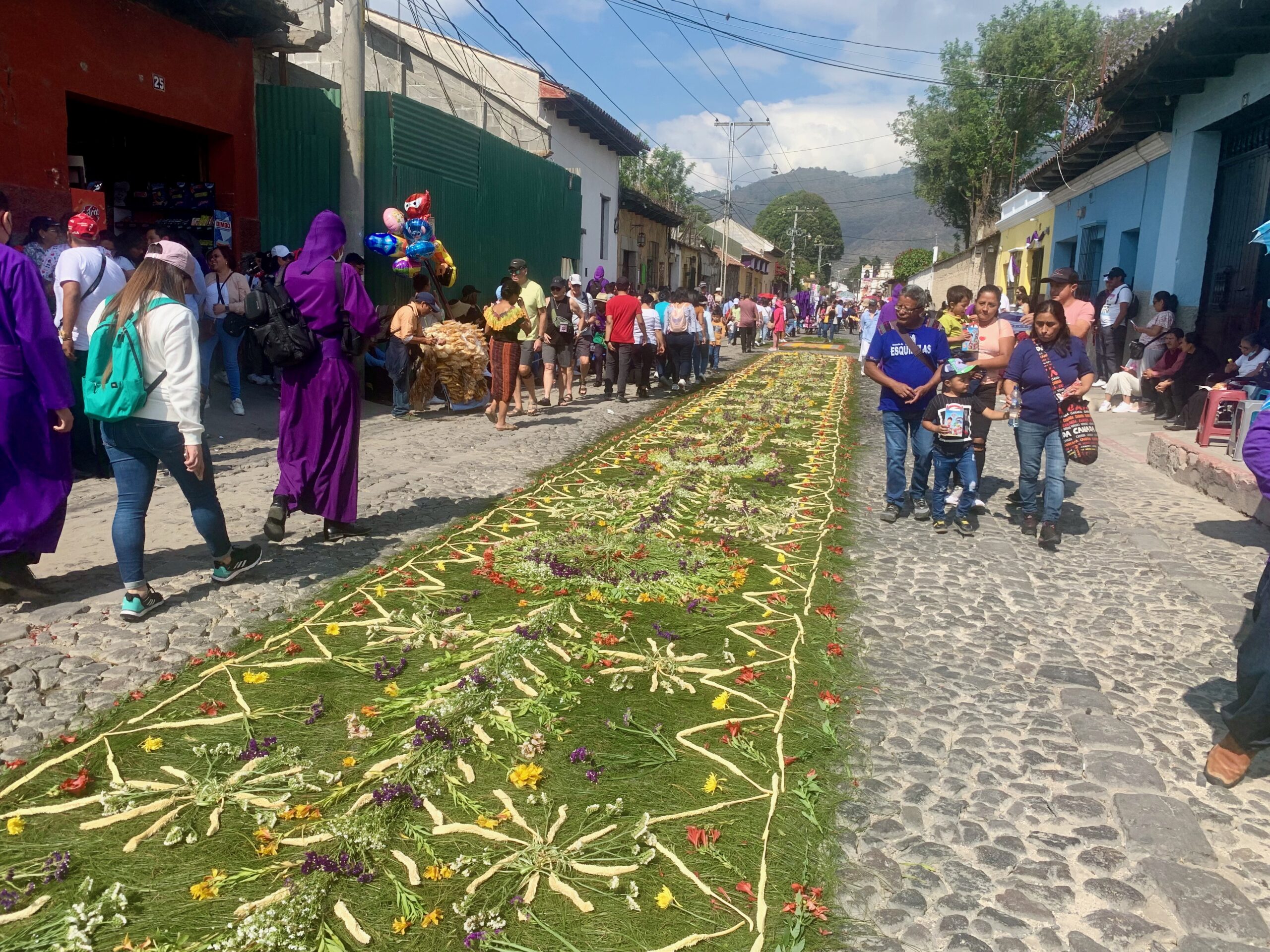
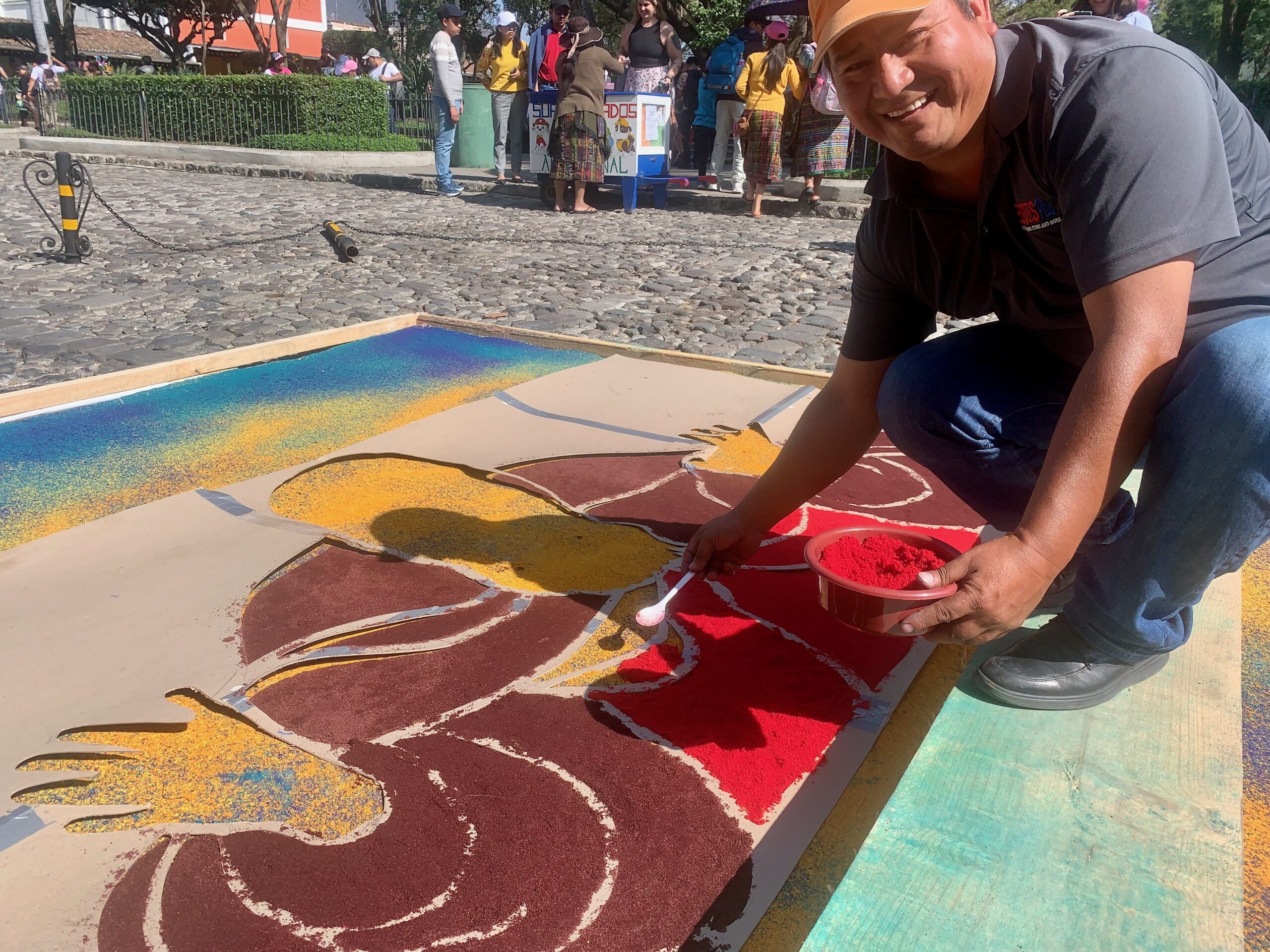
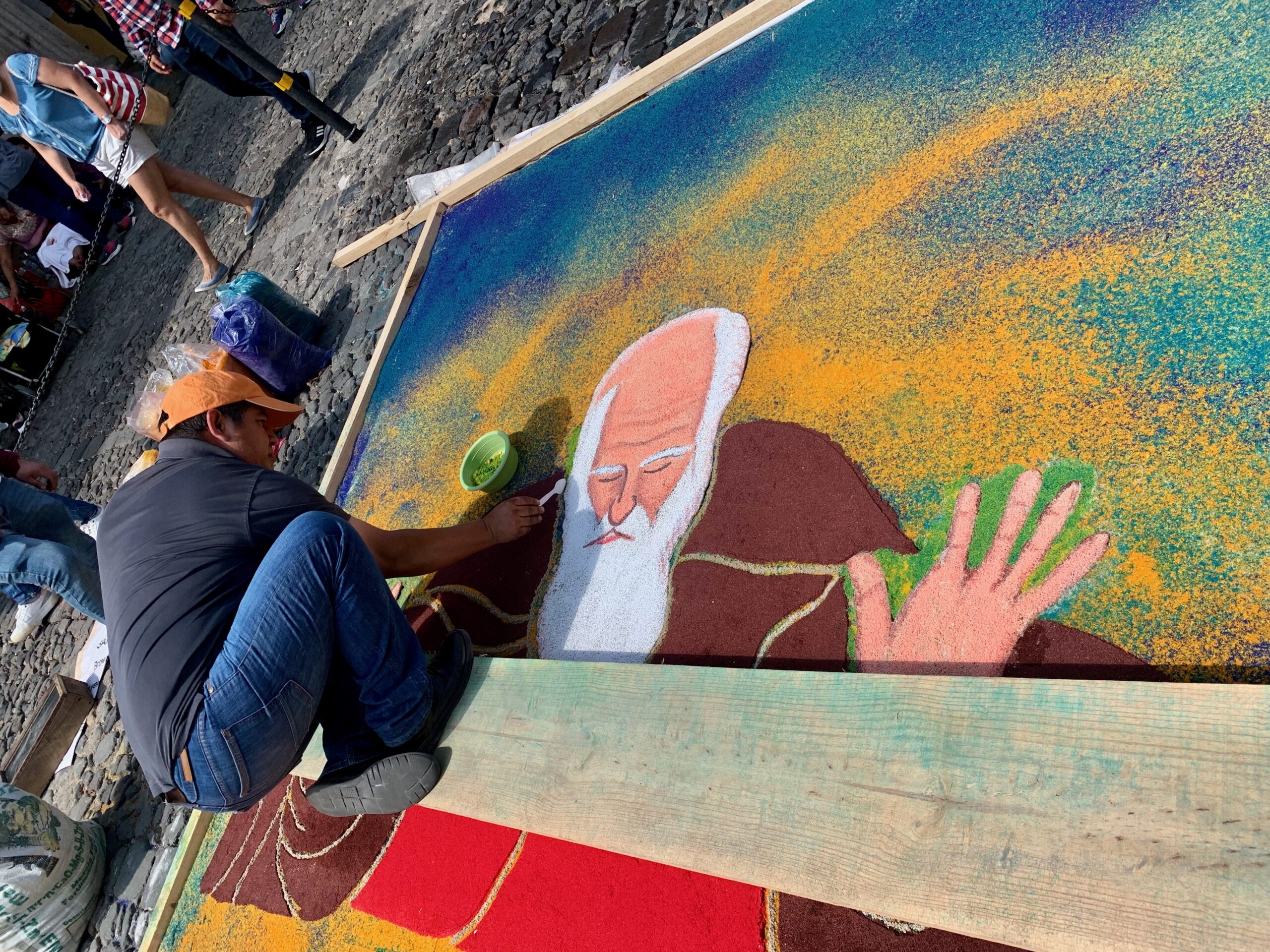
The city made a big effort for the day. Extra police redirected traffic away from the procession route; homes and public buildings flew flags, sellers of street food took their chances and made a killing. On the rough surface of the cobblestone streets, flowers and sawdust, brightly coloured with dyes, were used with great care, skill and artistry, to create pictures. Where they were laid in the path of the procession, it simply walked over them, erasing them until next year, when they will do it all again.
Sic transit gloria mundi, as the real Romans said once upon a time.
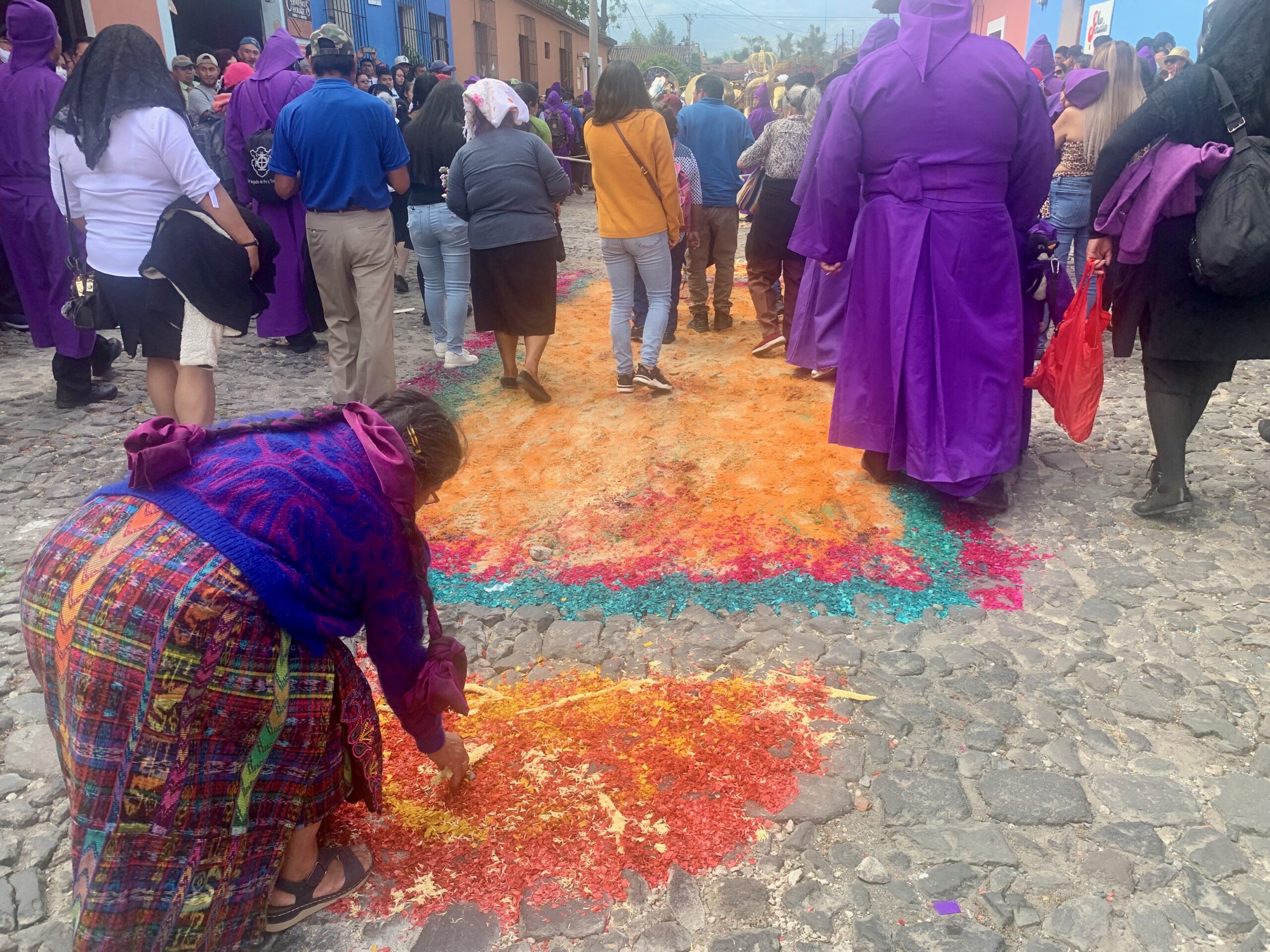
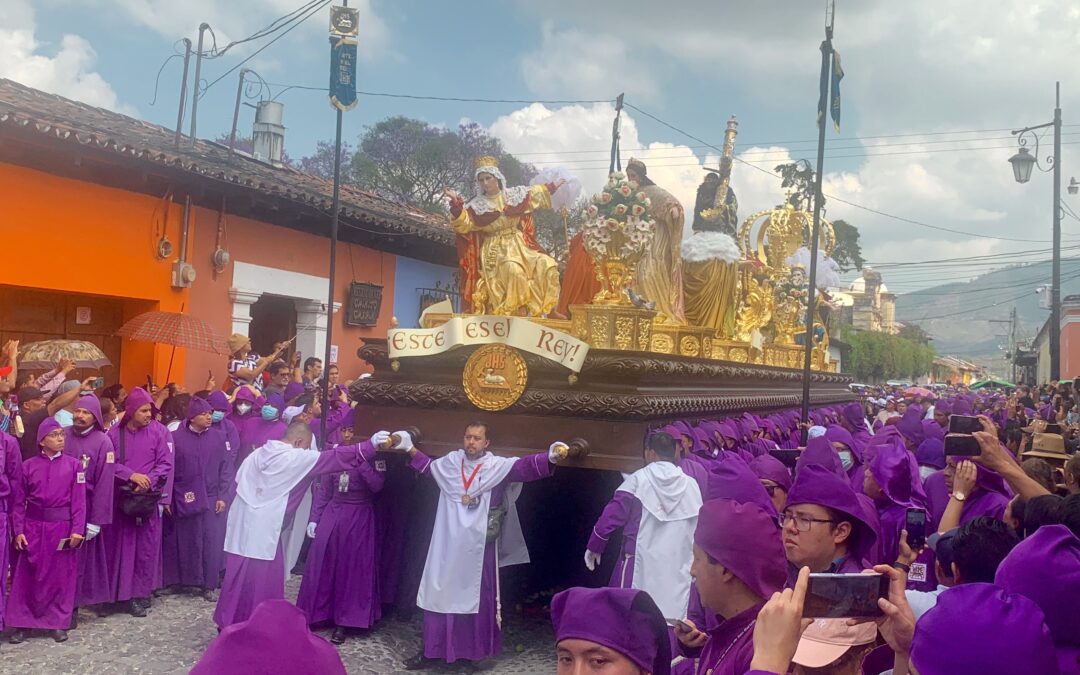
Wonderful spectacle!